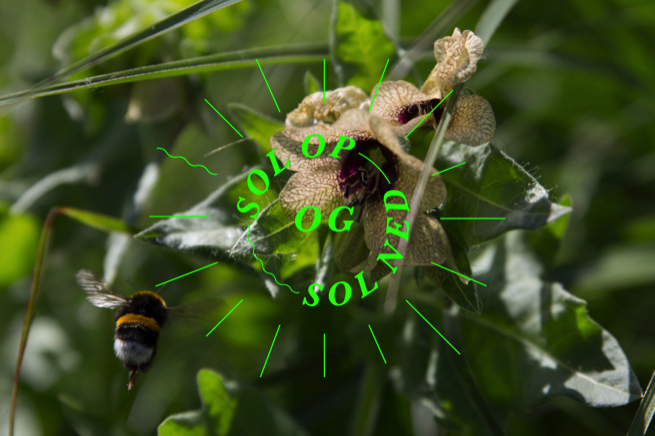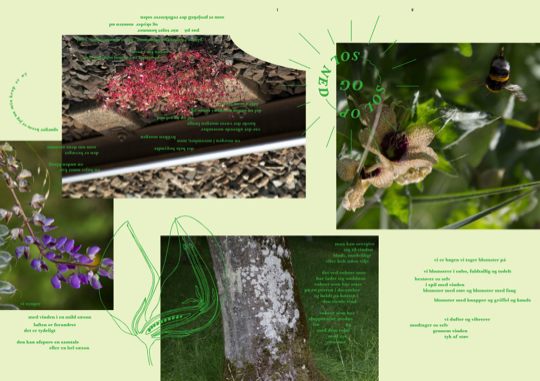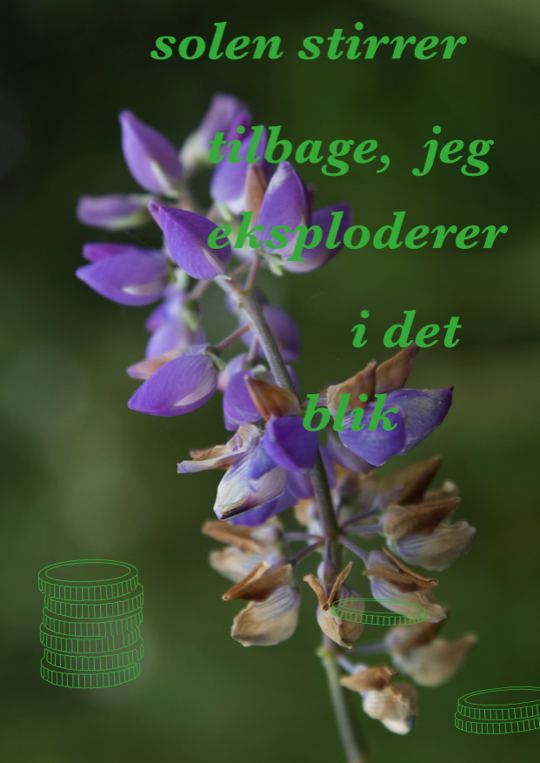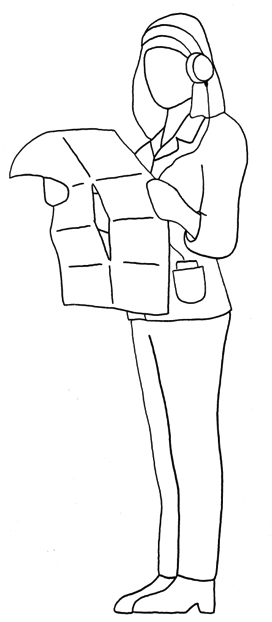Commisioned by Museum Skanderborg, this site specific work consists of two parts that combine stories about the journeys of people and plants through time and space. The first part of the work is a poetic sound work in three episodes with music by composer Claus Haxholm. The second part of the work is a collage of photos, drawings and poems in the form of a pamphlet that can be unfolded to become a poster. The collage cross-pollinates the narratives of the three episodes of the sound work, exploring how their narratives interconnect. The collage is published in a limited edition and could be collected free of charge at Museum Skanderborg during the exhibition.

EPISODE 1: Krængebøgen
Duration: 19:09 min. Language: Danish
Text and voice: Louis André Jørgensen
Music: Claus Haxholm
EPISODE 2: Den Reisende
Duration: 27:24 min. Language: Danish
Text: Louis André Jørgensen
Voice: Iben Benedikte Bach
Music: Claus Haxholm
EPISODE 3: Djævleøje og Ulvebønne
Duration: 14:44 min. Language: Danish
Text: Louis André Jørgensen
Voice: May Lifschitz
Music: Claus Haxholm
Sol op og sol ned



Comissioned by Museum Skanderborg, 2022
This episode is narrated by Krængebøgen, an approx. 200 year old beech tree in Skanderborg Gardens, known in local folklore because of its two connected trunks, which makes it look like it has legs. Krængebøgen talks about major historical events from its own perspective: Rising CO2 levels during the industrial revolution, and the tremors from the bombings of Skanderborg during Word War II. Beech trees are connected to the Danish language trough their name: In the Viking Age, beech was called bog, which means book, and back then writing was done by cutting runes into staffs of beech wood. These staffs were called bogstaver, which today is the word for letters in Danish.
The Henbane, which grows in the medicine garden at Øm Monestary near Skanderborg is a deadly poisonous and hallucinogenic plant whose seeds can survive several hundred years in the ground. If the soil is disturbed the Henbane can wake up from its long sleep. This episode is narrated by the Henbane, which sprouts, blooms and strikes up a conversation with its neighbour, a Many-leaved Lupine. They exchange names, of which they have many, that they carry with them from a time when plants had different names in different dialects. For instance the Henbane was called Devil's Eye, Girl's Shit and Hell's Balls. The Lupine was called Wolf's Bean, Turkish Crown and Bird's Pea, just to mention a few.
This episode is narrated by a passenger on a seemingly endless journey by train through history. The story begins in fall at the beginning of the 20th century, where our traveler is freezing in a cramped third-class compartment. The wooden seats are uncomfortable and on the outside of the train the conductor moves on the narrow boardway, holding on to the rail and checking the passengers' tickets through the windows. Outside, fields, towns and forests pass by, while the traveler drives through autumn into winter, which gradually turns into spring and summer. Along the way our traveler get off the steam train and enters the fast train while gradually developing a series of rituals for their journey.
Drawing of the collage which comes in the shape of a booklet that unfolds to a poster.
Site-specific work in two parts: 1) A three part sound work and 2) A limited edition collage of photos, drawings and text. Language: Danish, 2022.